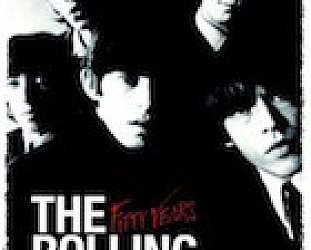Graham Reid | | 3 min read

When the court case between two of the authors of The Holy Blood and the Holy Grail and Dan Brown, author of The DaVinci Code, was being played out in London a couple of years ago, commentators noted the obvious difference between their books: one was -- purportedly -- a work of non-fiction research and the other was a mystery-thriller novel.
What no one commented on was how much Holy Blood, Holy Grail by Michael Baigent, Richard Leigh and Henry Lincoln (the latter not a litigant in the copyright infringement case against Brown) was also constructed like a thrilling novel with its protagonists very much centre stage.
Their book -- with pulse-racing lines like, “We had already suspected the existence of a group of individuals, if not a coherent ‘order’ behind the Knights Templar” -- took readers on the authors’ journey of discovery through old churches, odd artworks and mysterious parts of history in a manner which was sometimes as convoluted as a Sam Spade story by Dashiell Hammett.
Much of that slightly breathless style might be attributed to New Zealand-born Baigent whose The Jesus Papers trawls similar backroads of history in a equally breathless style.
It opens with him being invited by unnamed but important dealers in antiquities to photograph some mysterious parchments (the photographs subsequently go missing, of course), then treads quickly across Baigent being told in secondhand hearsay that Jesus was alive in 45AD. It ends some 200 pages later with him shown a letter by “a contact” which Baigent believes was written by Jesus in about 34AD.
In that letter the writer is defending himself against charges by the Sanhedrin -- the Jewish council -- that he has said he is “the son of God”. The letter writer says he only asserted he was filled with the spirit of God.
If it is true the letter‘s author was Jesus -- and that qualification should be written in marquee-sized lettering -- then the Christian church would want such a thing suppressed.
Subtitled “Exposing The Greatest Cover-Up in History”, the book -- novelistic, digressive, packed with threads of historical research and the occasional rummage around an archaeological site -- traverses much the same territory as many others as it argues Jesus was an anti-Roman political agitator. But Baigent goes further to assert Jesus did not die on the cross but was smuggled out of the country, maybe to the south of France and possibly even Rome.
The scant “evidence” for this which sets off his quest is, as it was in Holy Blood, Holy Grail, in the paintings of the Stations of the Cross in the church at Rennes le Chateau in the south of France.
Frequently Baigent demands more leaps of logic than the faith he is trying to debunk: the sponge pressed to Jesus’ lips when on the Cross contained an opium-based sedative not vinegar; Jesus was revived by spices then smuggled out of the tomb at night by Joseph of Arimathea and Nicodemus; Pontius Pilate colluded in this charade . .
By extrapolation, assiduous research, long and somewhat boring diversions into Egyptian mysticism (Baigent asserts that Jesus’ wilderness years were spent in Egypt) the author undertakes a dogged, fanciful and sometimes evocative quest to expose truths he believes have been suppressed for political and religious reasons.
It’s an occasionally gripping read -- I see Kevin Spacey as Baigent and Cliff Curtis as one of the many shadowy Middle Eastern antiquities dealers -- but as an attempt to build a cogent case it would be laughed out of court.
Baigent and Leigh lost against Brown, but sales of Holy Blood, Holy Grail soared. That The Jesus Papers -- a pseudo-history, or a bomb dropped in the cloisters if you prefer -- arrived at the same time as the film adaptation of The DaVinci Code is, of course, nothing more than a coincidence.
And if you believe that, you’ll believe anything.
Maybe even this book.





Zenebe Akalu - Nov 24, 2010
Really good and ill bad work
Savepost a comment